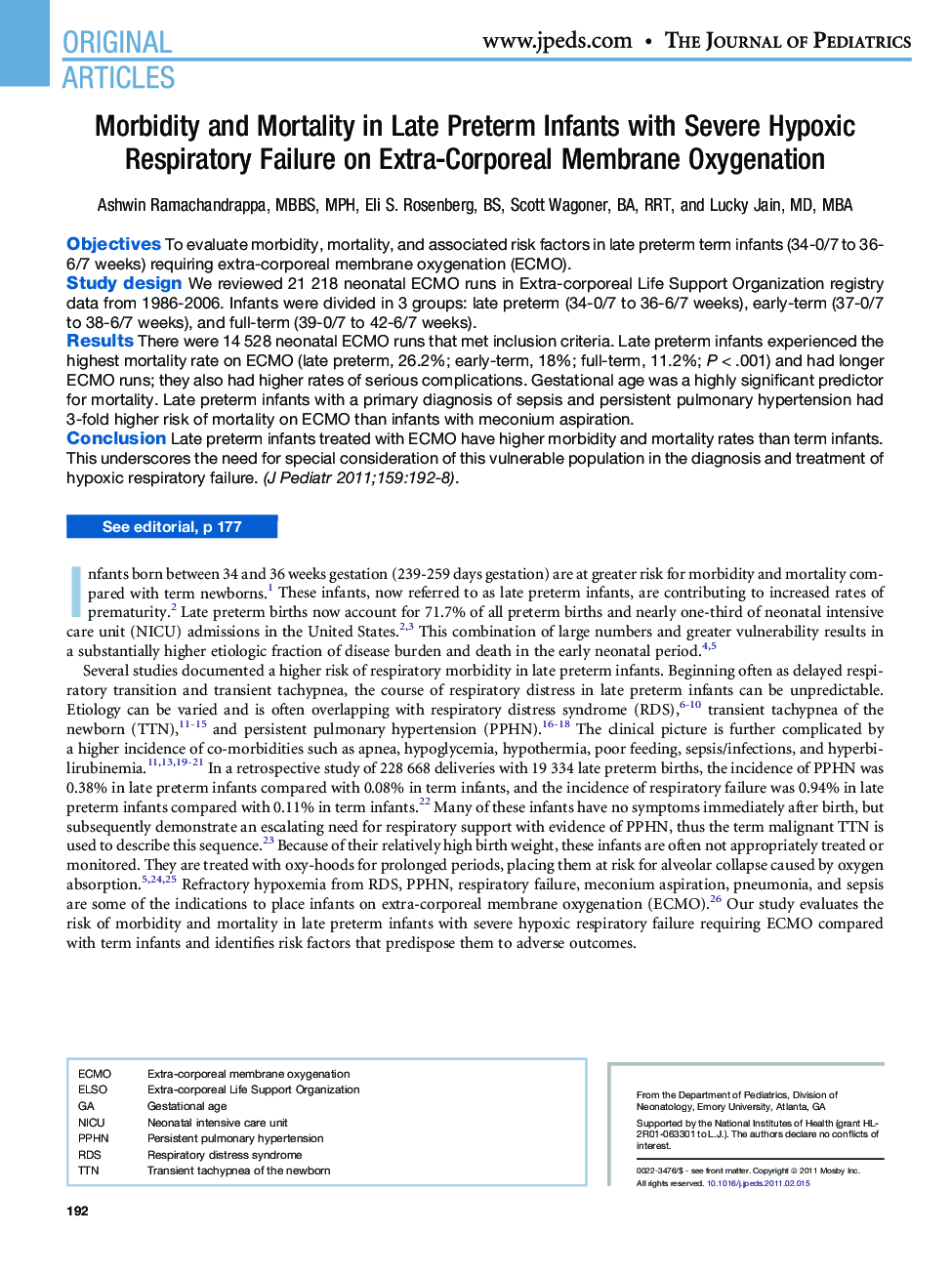| Article ID | Journal | Published Year | Pages | File Type |
|---|---|---|---|---|
| 6224606 | The Journal of Pediatrics | 2011 | 10 Pages |
ObjectivesTo evaluate morbidity, mortality, and associated risk factors in late preterm term infants (34-0/7 to 36-6/7 weeks) requiring extra-corporeal membrane oxygenation (ECMO).Study designWe reviewed 21 218 neonatal ECMO runs in Extra-corporeal Life Support Organization registry data from 1986-2006. Infants were divided in 3 groups: late preterm (34-0/7 to 36-6/7 weeks), early-term (37-0/7 to 38-6/7 weeks), and full-term (39-0/7 to 42-6/7 weeks).ResultsThere were 14 528 neonatal ECMO runs that met inclusion criteria. Late preterm infants experienced the highest mortality rate on ECMO (late preterm, 26.2%; early-term, 18%; full-term, 11.2%; P < .001) and had longer ECMO runs; they also had higher rates of serious complications. Gestational age was a highly significant predictor for mortality. Late preterm infants with a primary diagnosis of sepsis and persistent pulmonary hypertension had 3-fold higher risk of mortality on ECMO than infants with meconium aspiration.ConclusionLate preterm infants treated with ECMO have higher morbidity and mortality rates than term infants. This underscores the need for special consideration of this vulnerable population in the diagnosis and treatment of hypoxic respiratory failure.
